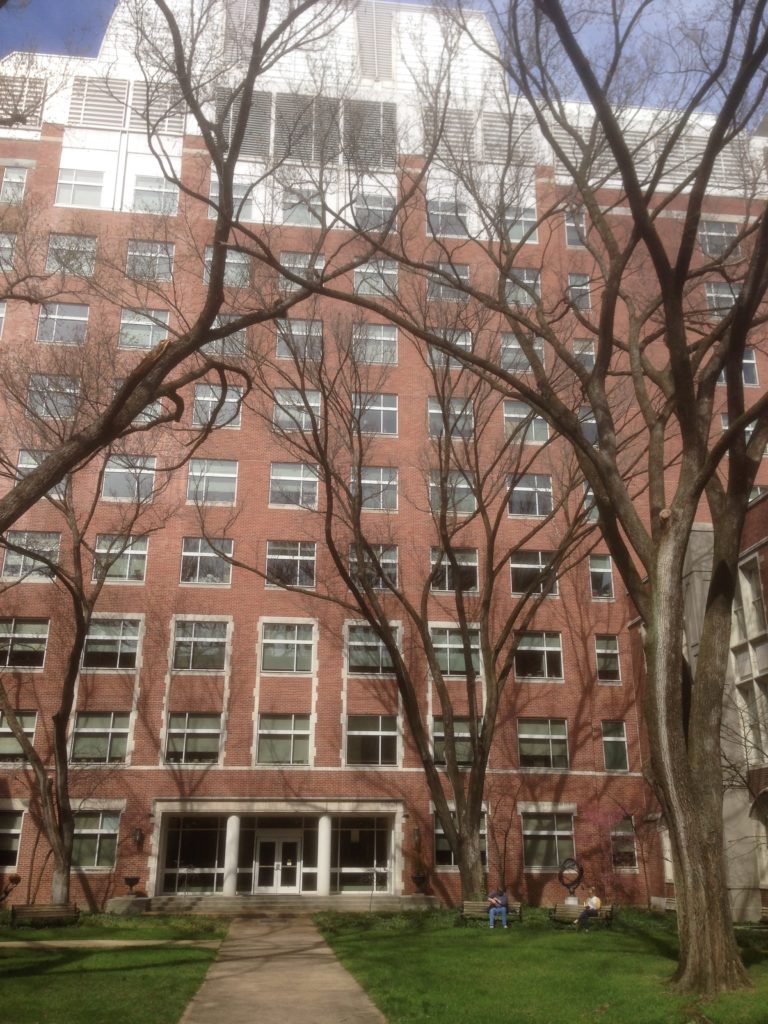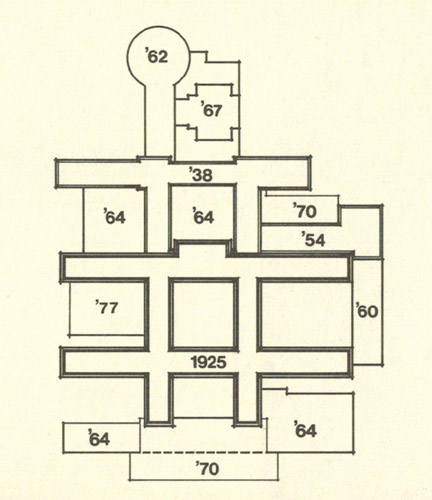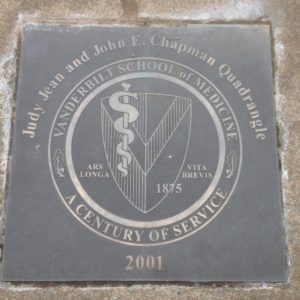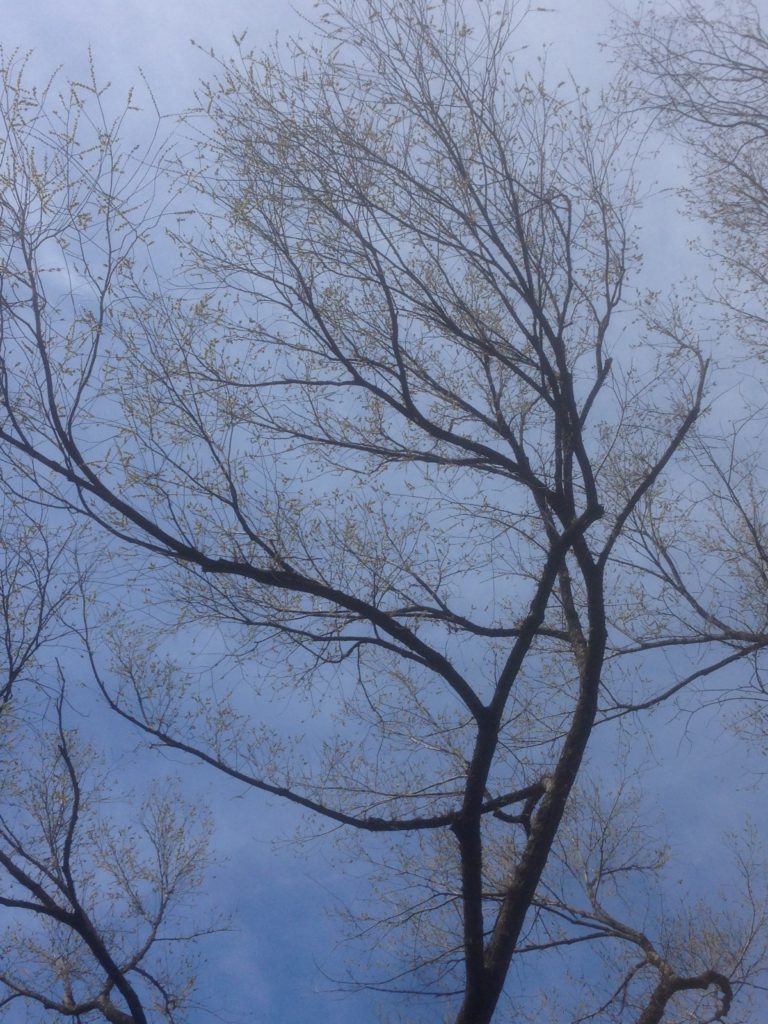History: Chapman Quad elms

American elms in Chapman Quad, 2016. Photo by Steve Baskauf under a CC-BY license.
The large elm trees in Chapman Quadrangle provide shade and a peaceful environment. But how long have they been there and how did Chapman Quad come to be?

Clearing the site for Vanderbilt Hospital, 1 November 1923. VUMC Through Time, https://www.mc.vanderbilt.edu/throughtime/items/show/11624.
The original Vanderbilt hospital and medical school were built in an area on the south side of the campus between 21st Ave.S. and the Chancellor’s residence.

Aerial view of the Vanderbilt hospital in about 1938. VUMC Through Time, https://www.mc.vanderbilt.edu/throughtime/items/show/2571.
The original Vanderbilt hospital was built in the shape of a tic-tac-toe board or “hash” character. This was said to be so that patient rooms could all have access to natural lighting. In the photo above, the ruins of Wesley Hall can be seen in the upper right and the roof of the chancellor’s mansion can barely be seen over the first addition to the hospital (built in 1938) attached on the western side. The entrance to the Medical School (now Chapman Quad) faced the Wesley Hall ruins and the Nursing School.

Entrance to the Medical School in about 1935. VUMC Through Time, https://www.mc.vanderbilt.edu/throughtime/items/show/903.
The photo above shows the appearance of the entrance to the Medical School in about 1935. At the time there was little landscaping in the area, and a road allowed cars to drive nearly to the entrance.

Diagram of additions to the Vanderbilt Hospital from McGaw, p. 122.1
Over time, many extensions were built onto the hospital (now Medical Center North).

.View from the Vanderbilt Medical School entrance in the late 1950s showing the two-story addition that closed off the Medical School courtyard (now Chapman Quad). VUMC Through Time, https://www.mc.vanderbilt.edu/throughtime/items/show/908.
In the late 1950s, the entrance to the Medical School was closed off and made a courtyard by a two-story addition.

.View from the Vanderbilt Medical School entrance in 1960 showing the construction of Learned Lab. VUMC Through Time, https://www.mc.vanderbilt.edu/throughtime/items/show/918.
Soon afterwards, construction of the Learned Labs on top of this addition made the area more completely enclosed. In the photo above, young American elm 4-387 is visible to the right of the doctor walking into the courtyard.

View of the courtyard and entrance to the medical school in about 1985. VUMC Through Time, https://www.mc.vanderbilt.edu/throughtime/items/show/964.
In the photo above from about 1985, the American elms, now about 40 years old, are reaching maturity.

In 2001, the courtyard was named “Chapman Quad” after Judy Jean and John E. Chapman, M.D. John was the Dean of the School of Medicine and served the school for over 25 years.

American elms blooming in Chapman Quad in early March 2016. American elm differs from the similar September elm, which blooms in the fall. Photo by Steve Baskauf under a CC-BY license.
In the early 1900s, a fungal disease, known as “Dutch elm disease” invaded the United States. Carried by beetles, the disease spread across the eastern and central US and by 1970s had wiped out most of the mature elms, as the disease could quickly spread from tree to tree. However, surrounded by the original hospitals (nowadays the Medical Center North), the American elms on the Chapman Quad oddly survived in this “elm disease storm” and remained to be the few elms on campus. Many people suspected that the elms lived because they were surrounded by hospitals in an enclosed environment, and the disease could not spread to those elms as such. This reasoning remained controversial as professionals doubted the effectiveness of the buildings in containing elm disease. Regardless, the true reason behind the story remained mysterious and the surviving elms became an urban legend that people talk about.
Return to the historical tree tour page for American elm 4-387.
1 McGaw, Robert A. 1978. The Vanderbilt Campus: A Pictorial History, Vanderbilt University Press, Nashville.